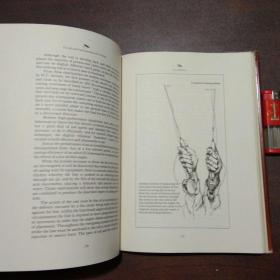本文目录导读:
- Choosing the Right Spot
- Setting Up Your Equipment
- Attaching the Bait
- Casting the Line
- Patience is Key
- Reeling in the Catch
- Safety Tips
- Conclusion
Home Fishing: A Step-by-Step Tutorial with Diagrams
Fishing from the comfort of your own home can be a delightful and rewarding experience. Whether you have a small backyard pond or a large garden, setting up a fishing spot can provide hours of relaxation and entertainment. In this article, we'll guide you through the essential techniques and provide a visual diagram to help you master the art of home fishing.
Choosing the Right Spot
The first step in home fishing is selecting the perfect spot. Look for a quiet area with easy access to water. If you're dealing with a backyard pond, ensure it's well-maintained and free from contaminants. For garden fishing, consider digging a small pond or using a water feature.
Diagram 1: Identifying the Perfect Spot
- Green Circle: Ideal location for fishing
- Blue Line: Access path to the water
- Yellow Dots: Obstacles to avoid (e.g., rocks, plants)
Setting Up Your Equipment
Once you've chosen your spot, it's time to set up your fishing equipment. The basics include a rod, reel, line, hooks, and bait. For home fishing, you may not need the same heavy-duty gear as you would for outdoor fishing.
Diagram 2: Home Fishing Equipment Setup
- Red Rod: Fishing rod
- Blue Reel: Reel attached to the rod
- Yellow Line: Fishing line connected to the reel
- Green Hooks: Hooks attached to the line
- Purple Bait: Bait attached to the hook
Attaching the Bait
Choosing the right bait is crucial for a successful home fishing experience. Live bait, such as worms or minnows, can be highly effective. Alternatively, artificial lures or even homemade bait can work well.
Diagram 3: Attaching the Bait

- Green Hook: Hook attached to the line
- Purple Bait: Bait attached to the hook
- Yellow Line: Line running through the rod and reel
Casting the Line
Casting the line is a fundamental skill in fishing. To cast, hold the rod with one hand near the reel and the other near the tip. Swing the rod back and forth, then release the line when the rod is at its highest point.
Diagram 4: Casting the Line
- Red Rod: Swing the rod back and forth
- Blue Reel: Reel attached to the rod
- Yellow Line: Line released when the rod is at its highest point
Patience is Key
Once your line is in the water, patience becomes your greatest asset. Wait for the fish to bite. If you're using live bait, be prepared to wait longer as the fish may take some time to notice the movement.
Diagram 5: Waiting for a Bite
- Green Hook: Hook with bait submerged in water
- Blue Line: Line connected to the reel
- Purple Bait: Bait slowly moving in the water
Reeling in the Catch
When you feel a tug on the line, it's time to reel in your catch. Gently pull the rod towards you while maintaining tension on the line. Once you've brought the fish close to the shore, you can safely remove the hook and release or keep the fish as desired.
Diagram 6: Reeling in the Catch
- Red Rod: Rod pulled towards the fish
- Blue Line: Line connected to the reel
- Green Hook: Hook with fish attached
Safety Tips
When fishing from home, it's important to follow safety guidelines:
- Always supervise children around water.
- Keep a first aid kit handy in case of accidents.
- Avoid overfishing to maintain a healthy ecosystem.
Diagram 7: Safety Tips
- Red Cross: First aid kit
- Green Child: Supervised child
- Blue Water: Safe water conditions
Conclusion
Home fishing can be a fun and relaxing activity for the whole family. By following these step-by-step instructions and utilizing the provided diagrams, you'll be well on your way to becoming a master of home fishing. So, grab your rod, reel, and bait, and enjoy the tranquility of fishing from the comfort of your own home. Happy fishing!












